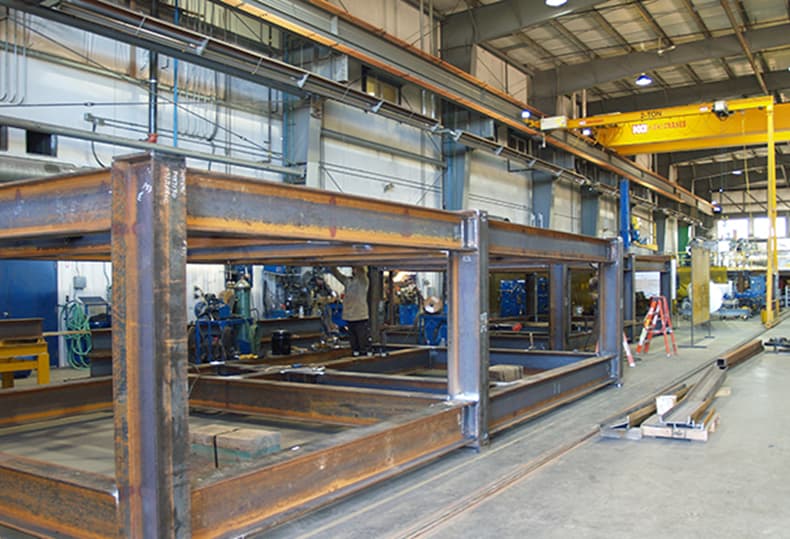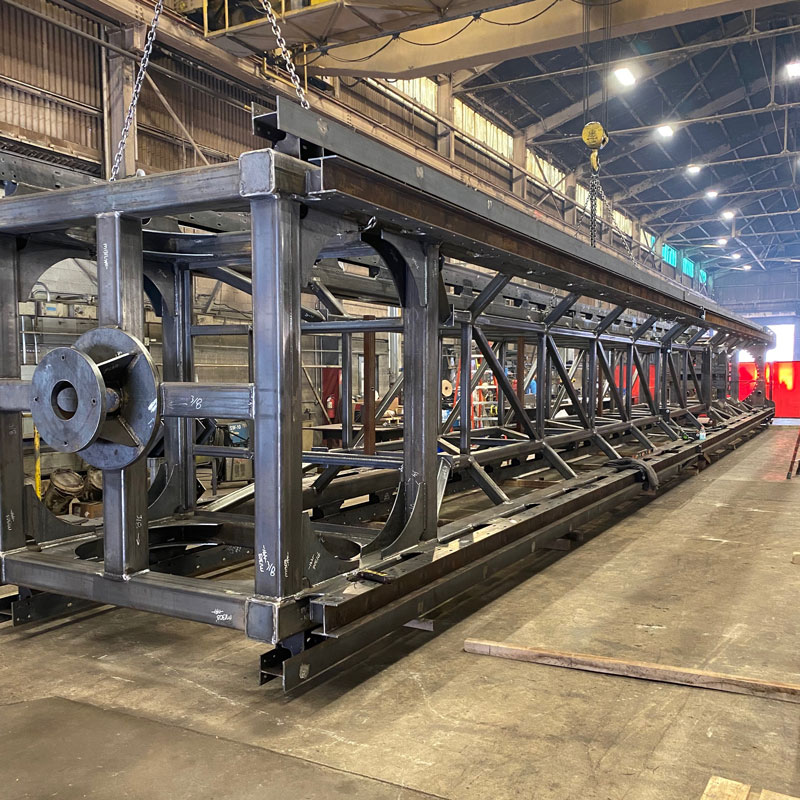Comprehensive Evaluation of Cutting-Edge Techniques in Steel Construction Industry
As the steel fabrication market proceeds to advance, the assimilation of cutting-edge techniques has actually come to be important for staying competitive and satisfying the needs of modern-day production criteria. In this vibrant sector where technology plays a pivotal role, comprehending the nuances of these innovative methods is not simply a choice however a need for those looking to build in advance in the ever-evolving world of steel construction.
Laser Cutting Improvements
In the world of steel manufacture, laser reducing improvements have actually changed the accuracy and effectiveness of metal shaping processes. By harnessing the power of concentrated laser beam of lights, producers can now achieve unrivaled levels of precision when reducing with various kinds of steels. This modern technology makes it possible for complex styles to be performed with minimal product wastefulness, making it a cost-effective solution for industries requiring high accuracy elements.
One of the vital benefits of laser cutting is its ability to handle a variety of materials, including stainless-steel, aluminum, and carbon steel, with ease. The procedure produces tidy, burr-free edges, removing the requirement for additional ending up steps. Furthermore, the non-contact nature of laser reducing reduces the danger of material contamination, causing better end products.
Moreover, laser cutting machines can be configured to make swift, precise cuts, dramatically lowering production time compared to standard reducing techniques. This rate and precision make laser reducing particularly ideal for mass production atmospheres where efficiency is extremely important. As modern technology continues to advance, laser cutting is positioned to play an increasingly important duty in the steel fabrication sector.

CNC Machining Innovations
The advancement of CNC machining innovations has introduced a new age of accuracy and performance in the steel fabrication industry. Computer Numerical Control (CNC) equipments have changed steel manufacture by offering exceptional precision and repeatability in the production procedure. Alpha reo. One of the essential technologies in CNC machining is the integration of advanced software systems that enable real-time monitoring and adjustments, resulting in enhanced productivity and quality assurance
Furthermore, the development of multi-axis CNC machines has permitted the fabrication of intricate steel parts with detailed layouts that were previously challenging to produce. These machines can perform a variety of machining procedures, including milling, drilling, turning, and grinding, all with high degrees of precision.
Furthermore, the incorporation of automation and robotics in CNC machining has structured manufacturing processes, decreased preparations, and decreased the margin of mistake. This integration of sophisticated modern technologies not only improves effectiveness but additionally makes certain regular quality throughout all fabricated steel parts. In final thought, CNC machining developments continue to drive innovations in the steel construction industry, establishing new standards for accuracy and efficiency.
Automated Welding Technologies
Automated welding technologies have actually revolutionized the steel manufacture industry, boosting effectiveness and accuracy in the welding procedure. These sophisticated technologies make use of computer-controlled systems to automate the welding process, bring about higher performance levels and enhanced weld quality. One of the key advantages of automated welding is the ability to do complex welds with constant precision, decreasing the chance of errors and revamp.
Robot welding systems are at the leading edge of automated welding technologies, providing unparalleled speed and accuracy. These systems can handle a wide variety of welding tasks, from straightforward to intricate, with convenience (steel fixing). By utilizing sophisticated sensing units and software program, robotic welders can Clicking Here adapt to variations in product and joint geometry, ensuring an attire and trusted weld
Moreover, automated welding modern technologies improve workplace security by lessening the exposure of human welders to harmful fumes and extreme warmth. As the steel manufacture sector continues to evolve, incorporating automated welding innovations will be important for business aiming to remain affordable and fulfill the expanding needs for high-grade bonded items.
Robotics Assimilation in Construction
Utilizing robotic systems in manufacture processes has actually come to be a critical strategy for boosting performance and precision in contemporary manufacturing settings. Robotics combination in steel construction provides a myriad of advantages, consisting of raised performance, improved high quality control, and boosted precaution. These sophisticated robot systems are outfitted with innovative sensing units and shows abilities, enabling them to carry out intricate jobs with a high level of accuracy and repeatability.
Among the crucial advantages of robotics integration in steel manufacture is the capability to automate repetitive jobs, such as product handling, cutting, welding, and setting up processes. This not only quickens production cycles yet likewise reduces the threat of human mistake, causing greater overall item high quality. Additionally, robots can operate 24/7, substantially increasing manufacturing outcome and conference tight task due dates.

3D Printing in Steel Manufacturing
Having actually revolutionized the steel fabrication sector with robotics assimilation, the burgeoning exploration of 3D printing in steel production is positioned to further advancement the world of modern-day production techniques. 3D printing, additionally called additive manufacturing, uses extraordinary layout freedom and complexity, enabling the development of complex steel frameworks that were formerly unattainable via traditional manufacturing methods. By utilizing computer-aided design (CAD) software application, makers can specifically regulate the layer-by-layer deposition of steel product, causing components with boosted functionalities and geometries.
One of the key benefits of 3D printing in steel production is its capacity to lower product waste dramatically. Unlike subtractive manufacturing procedures where excess material is trimmed away, try this web-site 3D printing just uses the essential quantity of steel required for the last component. This efficiency not only leads to set you back financial savings however likewise aligns with lasting production methods by reducing ecological influence.
In addition, 3D printing allows fast prototyping and customization, permitting the manufacturing of little batches of intricate steel elements with short preparations. As the technology proceeds to develop and become more obtainable, its combination into mainstream steel manufacture processes is expected to drive technology and performance across view it the sector.
Conclusion
In conclusion, the steel construction market has actually seen considerable innovations in techniques such as laser cutting, CNC machining, automated welding, robotics combination, and 3D printing. These sophisticated innovations have actually reinvented the means steel products are manufactured, causing raised cost-effectiveness, precision, and effectiveness. Continued investment in these ingenious techniques is crucial for the industry to stay affordable and fulfill the needs of contemporary manufacturing processes.
As the steel fabrication industry proceeds to advance, the assimilation of innovative methods has become essential for remaining competitive and meeting the needs of contemporary manufacturing standards.One of the vital benefits of laser cutting is its ability to handle a vast variety of materials, consisting of stainless steel, light weight aluminum, and carbon steel, with ease.Automated welding modern technologies have actually transformed the steel fabrication sector, improving efficiency and accuracy in the welding process.Having actually transformed the steel fabrication market with robotics combination, the burgeoning expedition of 3D printing in steel manufacturing is positioned to further breakthrough the realm of modern-day manufacturing strategies.In conclusion, the steel construction sector has seen substantial improvements in techniques such as laser cutting, CNC machining, automated welding, robotics combination, and 3D printing.